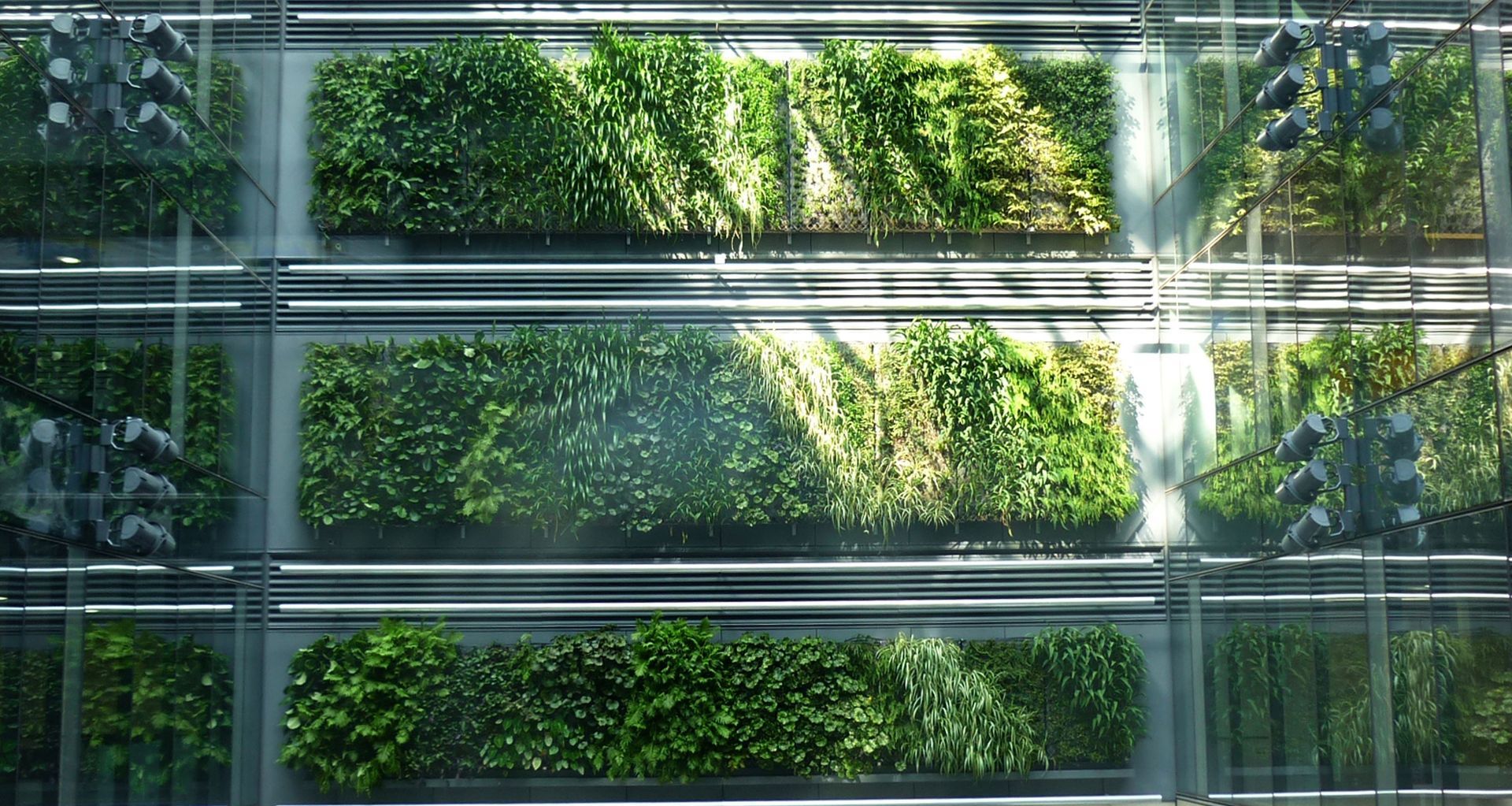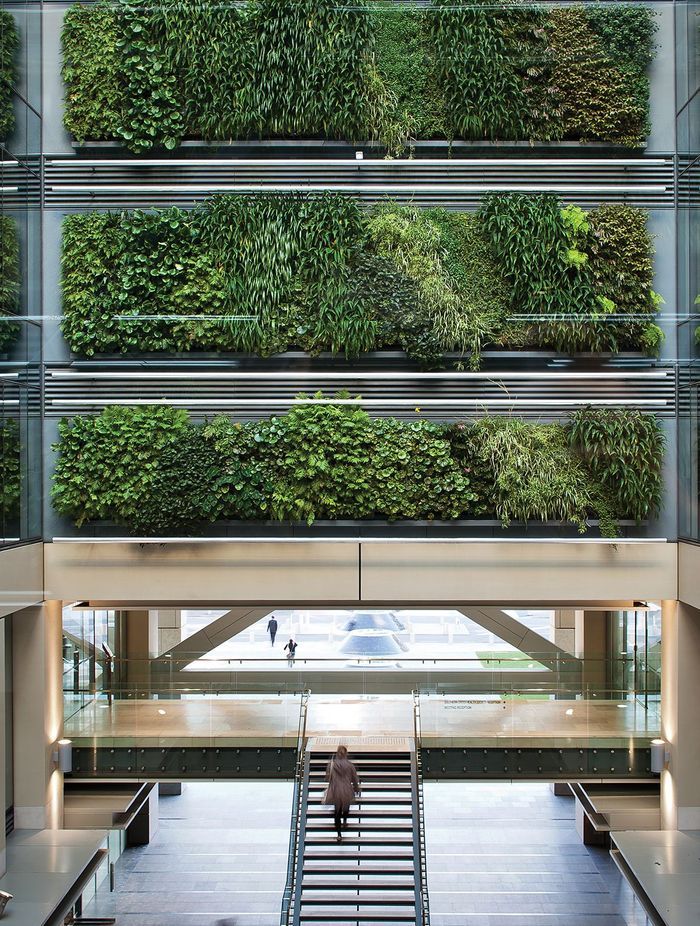It’s technology but not as you know it
Written by
11 August 2020
•
8 min read

You may be forgiven for having not heard of the term before but green technology, or green tech to those in the know, is fast becoming a major focus globally.
Essentially, it is an all-encompassing term to describe the utilisation of scientific knowledge to create infrastructure or products that are more environmentally friendly and may include the implementation of frameworks designed to recycle waste, purify water, create clean energy or conserve natural resources.
At its heart, the goal of green tech is to protect the environment and, in some cases, to even repair past damage.
“For us, green technology is about plants being used in innovative ways to handle urban development issues and the systems that allow that to happen,” says Graham Cleary of Natural Habitats.
“We’ve invested a lot of time and energy over recent years making advancements in a range of green tech areas including formulating a lightweight planting media for use with green roofs and green walls in a bid to reduce the associated costs of incorporating these technologies into new builds.
“We have been able to get to a point where our media is about 20 per cent of the weight of traditional media. This may not sound like a significant breakthrough but in the construction game, the heavier something is the more expensive it is to hold it up. To put that into context, if we’re installing a green roof on a building that, using traditional media, requires one tonne of media, you may have to spend an extra million dollars to ensure the structural integrity of said building. By replacing that one tonne with an alternative coming in at just 200kg, then the additional cost is minimal if not at all.”

Green tech: a triple threat… benefits-wise
The benefits are not just financial, says Graham, but also environmental and social.
“Stormwater runoff is a major issue in cities and towns and not just in New Zealand. You only need to see the news after a major storm event to see how sewage systems are impacted and the flow-on effect of that in terms of residents not being able to swim at our beaches.
“In Auckland, a green roof can stop up to 70 per cent of rainfall entering the sewers, negating run-off issues and helping to improve our natural environments. Likewise, at a global level, green roofs have been shown to have positive impacts on the heat island effect associated with our larger cities.”
Interestingly, research carried out in Europe also points to the efficacy of solar systems when used in conjunction with green roof technology, as the solar panels are not subjected to the high levels of radiant heat coming off of a standard roof. In fact, says Graham, it is now mandatory in Germany for solar and green roof technologies to be used in tandem on new commercial buildings.
Not surprisingly, green roofs and green walls are a boon for biodiversity, encouraging many insect and bird populations back into our urban areas and just in time, too.
“It has been estimated that wild bird populations in the continental United States and Canada have declined by almost 30 per cent since 1970—that’s nearly three billion less birds in just 50 years—as our human-altered landscapes lose their ability to support birdlife. Projections predict that should that decline continue at the same rate we will have lost all of our birds within the next century.
“If that’s not enough to make people sit up and take notice, there are also a number of ways in which green technologies directly benefit human beings living in urban areas, not least of which is their capacity for noise mitigation, filtering of pollutants and the enhancement of our health and wellbeing. Research has shown that hospital patients who are able to see ‘nature’ outside their windows spend up to 50 per cent less time in recovery. This has led to a number of hospitals in Europe and Australia incorporating green technology into their construction.
“Going back to financial benefits, residential apartment complexes with green roof and green wall installations have been shown to achieve higher sales figures as compared to their green technology-free counterparts. We have shown this to be true ourselves with the Quay West and The Parc developments.
“Similar outcomes have been shown in the commercial sector, also, with our green wall installation at the Britomart East complex garnering awards and accolades from the building’s owner, Matthew Cockram, CEO of Cooper and Company, who was reported as saying: “The investment made in these green walls has paid off with increased building value, high tenant retention and an improved green star rating”.”

Leading from the top down
The government recently announced its Building for Climate Change programme, citing: The building and construction sector is a large contributor to greenhouse gas emissions from producing materials, constructing buildings and the energy used in buildings. If New Zealand is to reach its climate change goals, including net zero carbon by 2050, the building and construction sector must play a major part in this.
“This is definitely a step in the right direction and we are really supportive of the initiative,” says Graham. “However, we believe that the only way to make significant inroads to reducing emissions is to open discussions around green technologies now. Other governments have done it and with almost immediate effect but there has to be incentives. The Singapore government, for example, initiated a 1-for-1 subsidy in which it matched every dollar invested in green tech by a developer.
“The government here needs to recognise that this is an investment and that rather than relying on the construction industry—which tends to be very short-sighted, especially when focusing on immediate return on investment—to take up the mantle, needs to implement a ‘carrot and stick’ approach. Sometimes there have to be rules and sometimes there have to be incentives. We can give the industry the tech but we can’t give them the mindset to use it.
“Currently, the New Zealand waste disposal levy is $10/tonne—in New South Wales it’s more than 10 times that—and you ask why we have one of the worst recycling records in the developed world? Stricter rules and charges around waste disposal combined with subsidies or tax breaks around green technology will go a long way to resolving much of our issues.”

Partnering with industry to further the green tech cause
Natural Habitats is prepared to ‘walk the talk’ when it comes to making green technologies more attractive to the building and construction industry, says Graham.
“We have been partnering with Callaghan Innovation to look at ways in which we can bring down the price of green tech and it has been a really helpful process and I believe we have cracked a lot of the issues.
“Basically, for us, green tech is pretty much a ‘cottage industry’ and we need to look at ways in which we can ‘industrialise’ processes such as the manufacture of green roof and green wall components so that we can streamline production and pass those savings on to the customer.
“Once we achieve that, it becomes a no-brainer for these technologies to go mainstream.”
Graham says that most of Natural Habitats’ industry partners are on board but work remains in educating the entire network chain.
“The likes of landscape architects get it and tend to be very receptive and we have undertaken some really great collaborations with firms like Boffa Miskell—with whom we worked on the Westfield Newmarket expansion, installing the largest total area of green walls in Australasia—and LandLAB, which we have really enjoyed being a part of. Where we need to put more effort into is working with engineers and educating the industry on where real savings can be made.
“For example, we’re working on a project at the moment where the building has ended up being over-engineered and now, at the end of the process, savings are trying to be eked out. Essentially, the engineers were working under the assumption that, to use my earlier reference, they needed to design the building to accommodate ‘a tonne of media’. The result is a building that has been constructed to near nuclear bunker standards. If we had had the opportunity of being involved at the beginning of the process, we could have saved the client much more than they’re trying to recoup now. It is a lesson that collaboration needs to occur right back at the initial scoping of the project.”
There have been recent wins for the mainstreaming of green tech with the Natural Habitats team being involved in the St Marks development, which is the first residential development in New Zealand to be awarded a Homestar innovation point for green walls as part of its drive to achieve Green Star accreditation.
Learn more about green tech and how it can have a positive impact on your next project.